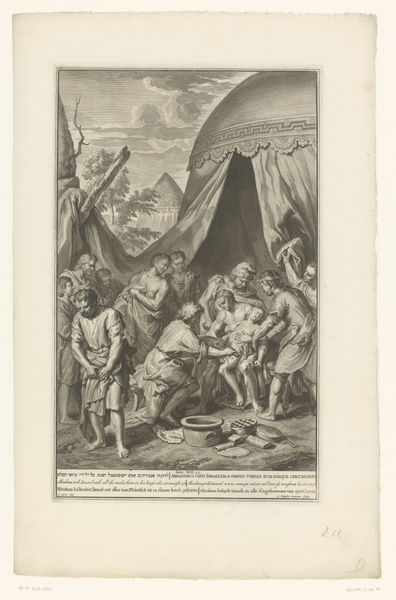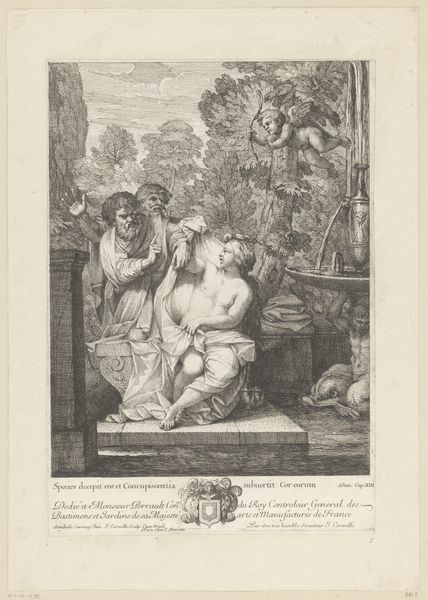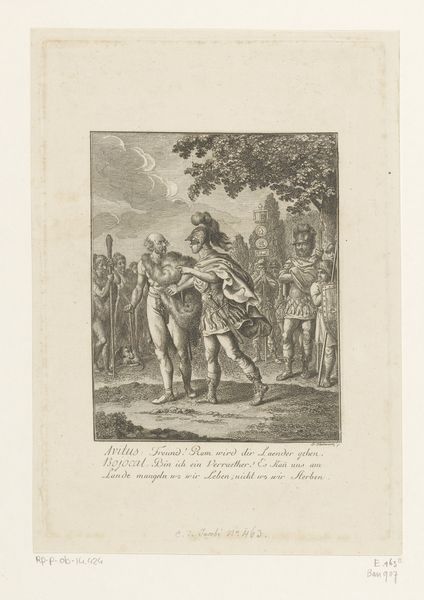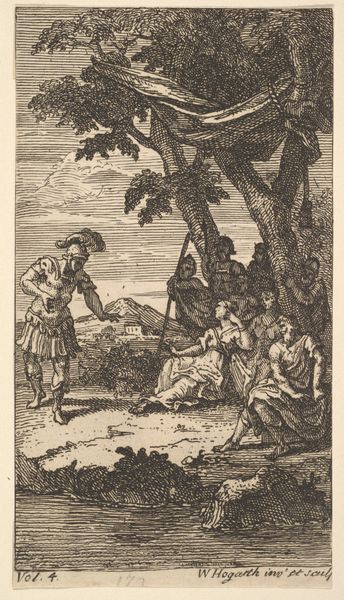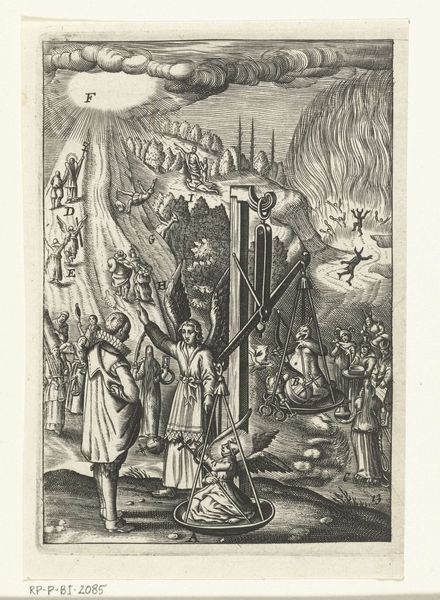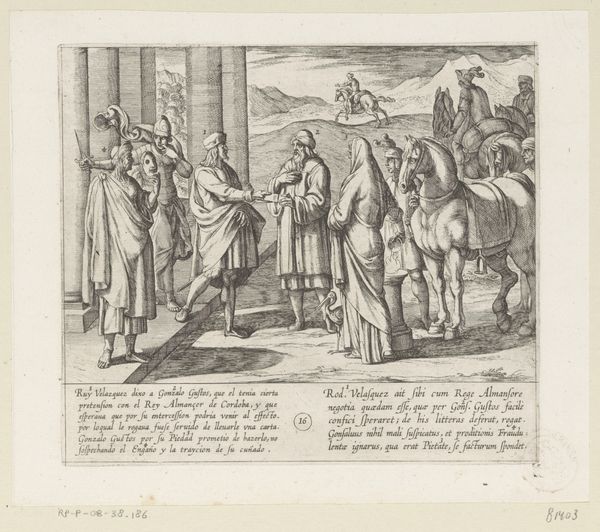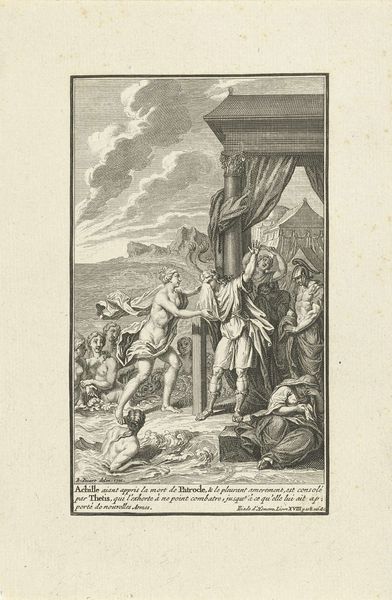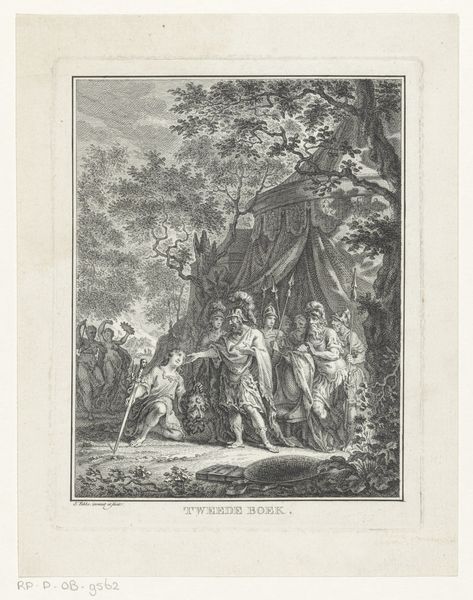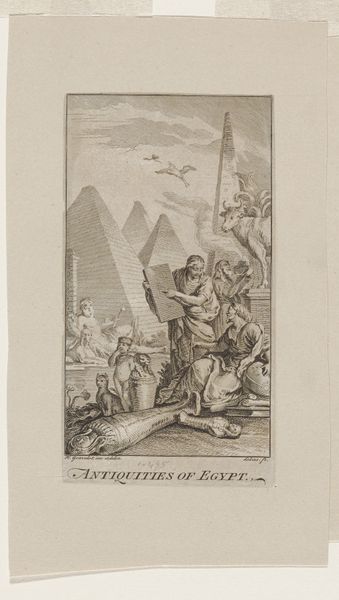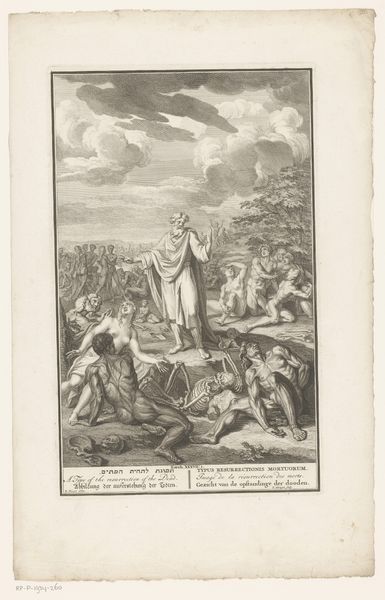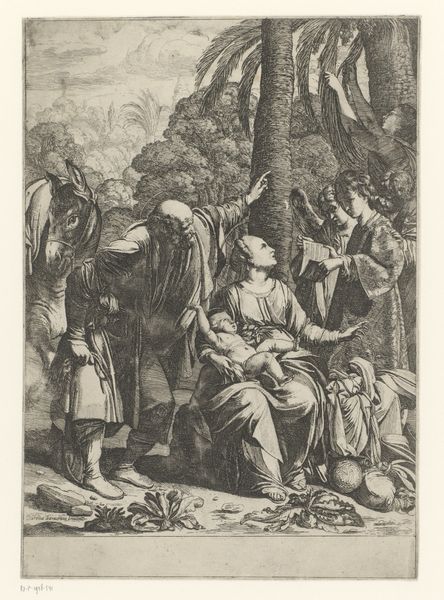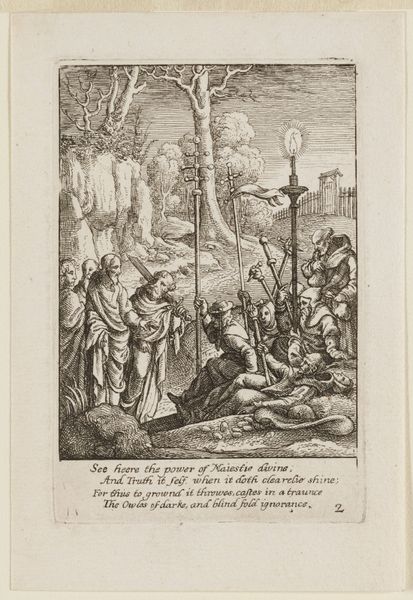
Eliëzer belooft dat hij een vrouw voor Isaak zal vinden 1720 - 1728
0:00
0:00
gilliamvandergouwen
Rijksmuseum
print, engraving
#
baroque
# print
#
old engraving style
#
caricature
#
history-painting
#
engraving
Dimensions: height 350 mm, width 218 mm
Copyright: Rijks Museum: Open Domain
Curator: Gilliam van der Gouwen produced this engraving, "Eliëzer promises to find a wife for Isaac", sometime between 1720 and 1728. It's currently held at the Rijksmuseum. What's your first impression? Editor: There’s a stiffness to the figures that makes me think about the laborious process of creating an engraving like this. Every line meticulously placed… the sheer physical effort involved must have been considerable. Curator: It's interesting you focus on labor. I'm immediately struck by the powerful symbolism. We see Eliëzer, Abraham's servant, promising to find a wife for Isaac. The kneeling figure laying hands beneath Abraham signifies an oath. Binding oneself to fulfill this crucial promise for the future of their lineage, ensuring continuity. Editor: Yes, and the material constraints dictated some of those artistic choices, didn’t they? Consider the limited tonal range achievable through engraving; it necessitated a stylized approach, wouldn't you say? That stylistic constraint shapes the visual language, directing how that "emotional weight" you were talking about is expressed. Curator: True, but that's also characteristic of Baroque engraving, it adds a layer of drama! Consider the open book with the object on it and how it might function as a visual tool—reminding the viewer about the story. Editor: What's the function of rendering such detail—of that camel train, of that figure’s pose? Is it merely illustration, or something more akin to mass-produced messaging? An open book itself can't give emotional context in the way that one of our physical contemporary Bibles, worn to falling apart and with scribbled notes from a dear relative in the margin might bring, can it? Curator: I suppose the aim was not verisimilitude, but the representation of piety, divine intention, lineage—abstract but critical values—through this reproducible medium. I do think that it holds some historical relevance! Editor: Point taken. Looking at the material choices reminds us how integral technique is in informing that symbolism and narrative, which has endured over time. Curator: Absolutely. And analyzing it reminds us that art exists in layers of cultural and social understanding. Editor: Indeed. And this baroque print offers us just that opportunity: an invitation to peel those layers away.
Comments
No comments
Be the first to comment and join the conversation on the ultimate creative platform.
